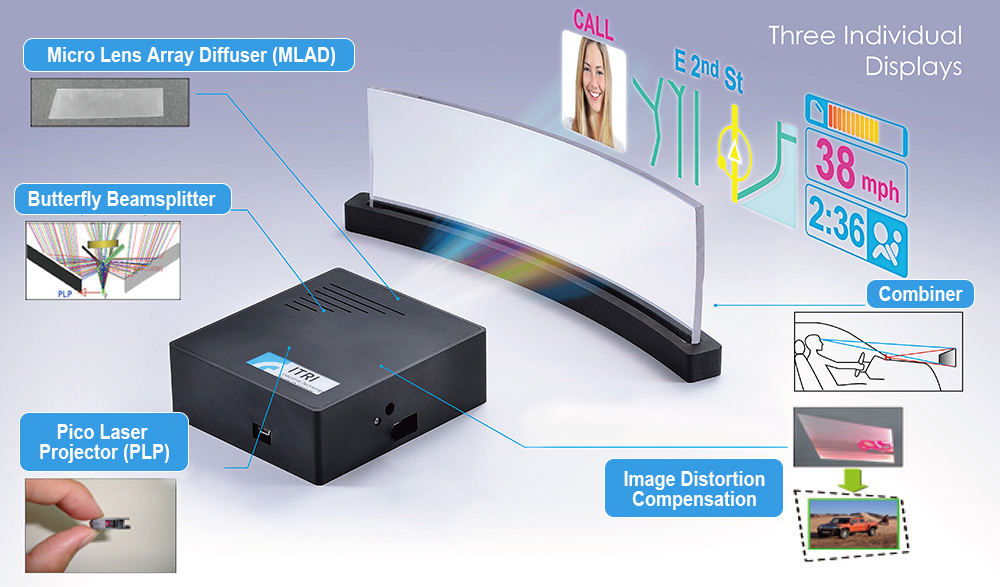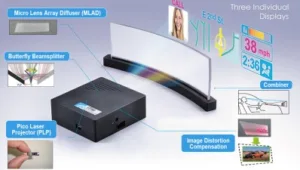The Smart Microsystems Technology Center at ITRI (Hsinchu, Taiwan) has developed a so-called Long-Distance Floating Multi-Screen Head-up Display for automotive applications. First, a few words of background on the reasons why ITRI felt that a new automotive HUD technology was needed.
ITRI characterizes conventional HUDs as having drawbacks that include the following:
- Short-distance imaging: The driver needs to frequently change focus from the road to (for example) the windshield, causing eye fatigue and enhancing driving risk.
- Small display area: Only limited driving information can be presented. Such a system is unable to fully meet future let alone current consumer needs.
- Image quality can degrade: The image produced by existing LED and LCD-based HUDs may not be bright enough for good quality viewing in direct sunlight.
The technology developed for ITRI’s new HUD was designed to address these issues. It integrates a pico projector module that includes laser diodes as the light source and MEMS micro-scanning technology to create images. The projector’s optical path is divided into three individual images using a unique “butterfly” beamsplitter. The beamsplitter reflects the upper image to the right side, the lower image to the left side and project the center image in the middle. The three individual images are then separately reflected into a microlens array diffuser in the HUD’s main light outlet where they are then enlarged. The net result is that the driver can view the HUD’s virtual image through the combiner where it appears as a 26-inch display at a distance of about two meters positioned beyond the windshield and in front of the driver.

ITRI’s new Long-Distance Floating Multi-Screen HUD is claimed to improve upon the limitations of conventional automotive HUDs as listed above in the following ways:
- Long-distance imaging: Projects the image at a location that has been shown most comfortable for human vision. As a result, safety is enhanced since the driver is not required to constantly change focus between the outside world and the windshield.
- Large display area: allows for a more complete display of information.
- Image quality is maintained: With 15,000 cd/m² luminance and a 10,000:1 contrast ratio, the system can overcome image degradation due to bright sunlight.
In addition:
- Resolution of 2,000 x 360 pixels allows three 720p images to be displayed side-by-side. Each individual display screen has about a 2:1 aspect ratio.
- High speed distortion compensation corrects each individual display, also contributing to the maintenance of high image quality.
- The volume of the HUD module is only 425 cubic centimeters. The fact that the device is compact is expected to simplify the physical aspect of installing the device.
- The HUD system supports a range of built-in features while also allowing drivers to customize and adjust the content of each of the three displays according to their preferences.
A video illustrating aspects of the new HUD system can be found at the end of this article.
In a press announcement, ITRI announced that their new HUD system was a 2016 R&D Awards Finalist.
At a price of $660, and with installation apparently a simple process, the ITRI type HUD has the potential for deployment not just in luxury vehicles but across the entire spectrum of automobiles. –Arthur Berman

